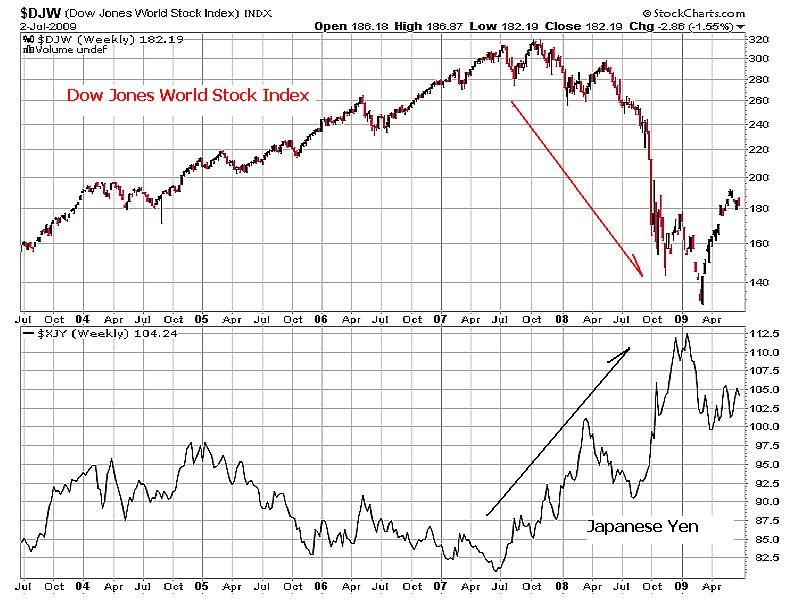Yen Carry Trade Back in Play
Post on: 16 Март, 2015 No Comment

One sure sign that some level of stability is returning to the global economy is an easing of the volatility we have seen with many of the major currency pairs. As any currency trader will tell you, volatility is a double-edged sword – it is possible to earn very attractive returns during periods of high volatility, but losses can be equally as spectacular. On the other hand, when exchange rates remain steady for a prolonged period, it may be easier to keep a lid on losses, but opportunities to profit are also limited. This is why when exchange rate volatility declines, many traders turn to the carry trade.
[mserve id=Central_Bank_BOJ.jpeg align=left width=400 caption=Bank of Japan alt=Central Bank of Japan BOJ title=Bank of Japan]
A carry trade strategy seeks to profit from the interest rate differential between two currencies. The approach is to select a currency pair where you sell (go short) a currency with a low interest rate, while simultaneously buying (going long) a currency with a higher interest rate. When you hold this currency pair open in your trading account, you must pay interest on the short position, while you receive interest on the long position. If you receive more in interest than you pay, this difference – known as interest rate carry or simply carry – is retained in your account as profit.
Now before you jump to the conclusion that this is as close as you can get to earning money for nothing, there is one important caveat you must consider. The entire time you hold the currency pair open in your account, the value of the trade itself is subject to changes in the exchange rate; this means that if the exchange rate moves against you, and even if you are earning positive carry during this time, you may actually lose money overall when you close the trade.
For much of the early 1990s, Japan had the lowest interest rates of the major currencies and entering into a carry trade using the yen to buy higher yielding currencies was very popular. The practice became less attractive during the mid 2000s and was put on hold entirely during the current economic crisis. In 2009 however, the carry trade came back with a vengeance, as Australia and New Zealand raised interest rates to 3.75 percent and 2.50 percent respectively, and this had many traders selling US dollars in order to buy aussie and kiwi dollars.
In addition, both currencies also fared vary well against the dollar from an exchange rate standpoint as you can see in the following table:














